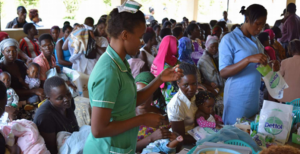Uganda’s ill health needs collective responsibility

By Fred Oyesigye
Uganda’s health ministry organizes health service from top to bottom within various departments and facilities.
That is to say from ministry headquarters to village health teams for easy access and provision of integrated comprehensive health services, such as antenatal care, intermittent preventive treatment of malaria in pregnancy, emergency obstetric care, post abortion care and immunization to venerable people.
However, the sector has remained discontented, pointing fingers to each other, without genuine reasons to poor utilization of health services, to erase all these accusations, it’s important to understand why utilization is poor in our health centers.
Time taken during health service delivery is one factor sighted, average hours in Uganda to get services has been 4 to 6 hours in health centers contrary to Ministry of Health policy of 1hr per patient.

Nevertheless, clients who spent less than an hour to get services were 5 times more likely to utilize services than those who spend three hours plus waiting, hence poor utilization of health services for subsequent sessions (WHO 2013).
Secondly, lack of team work is another factor. Primarily attributed to inadequate staffing, unskilled labour and absenteeism at health facilities, hence hindering utilization of health services especially when a service required, needs more than three people at ago.
Thirdly, missed opportunities is another mishap especially at the brim of staff shortages and logistics in health centres, this demoralizes clients and consequently hinders proper utilization of health services specially when clients fail to get a demanded product in time.
Monthly earnings greatly affect utilization of services on personal level i.e. clients need transport to health centres, clothes and food, it was observed that clients who earn shs50000= monthly utilize services 2 times more than those who earn less, because, they have money to support them in transport and other demands like food, soap, razorblades during service provision, this is demonstrated by many clients reporting at heath centre’s late (more than 24hrs), despite mobilization and sensitization service providers, thus increased infant mortality and maternal mortality rates in the country.
Distance to the nearest health unit or outreach is another impediment to utilization of health care services, clients who live in less than 3 kilometres utilize services more than those who live beyond (WHO 2013) because health centre’s a far.
Therefore the best option for utilization of health services in Uganda is collective responsibility. For instance, there is need for timely distribution of essential supplies/ management of clients, recruitment of skilled professionals to health units, continuing medical education, strong monitoring tools and support supervision, encouraging communities to engage in high paying projects for monthly earnings, and establishing formal health centre’s at village level for nearer health services.

